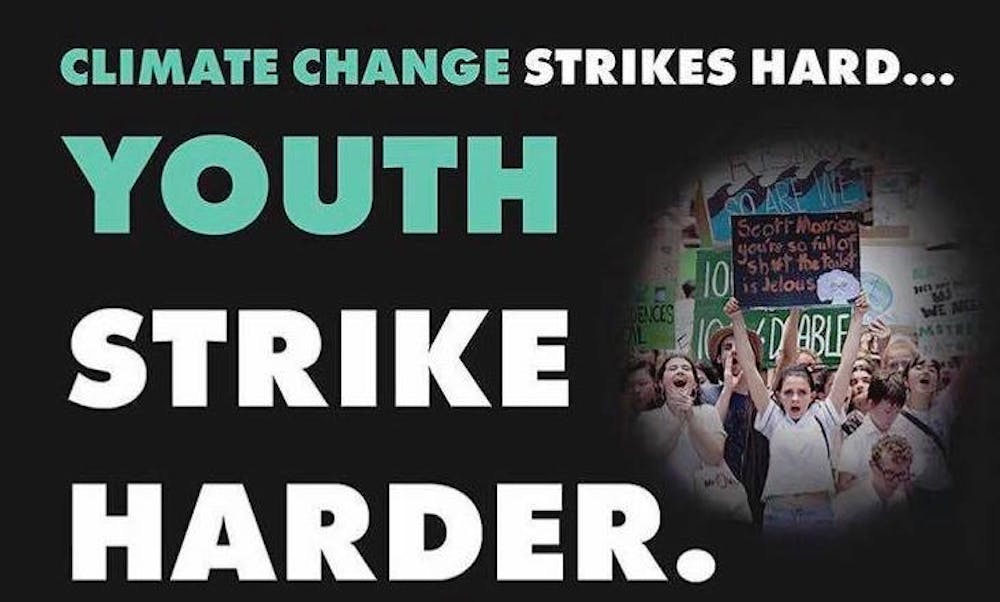As a part of the international movement against climate change, young people around the world have joined the Youth Climate Strike. According to The Guardian, students from over 50 countries will walk out of school on March 15, aiming to draw attention to the global climate crisis.
Participants in the U.S. Youth Climate Strike will show their support for the Green New Deal, which aims to combat climate change and preserve economic equality. This protest, centered in Washington, D.C., also calls for the federal government to declare that climate change is a national emergency.
The global movement was started last August when 15-year-old Greta Thunberg launched the first school strike in front of the Swedish Parliament building. Since then, similar movements have swept Europe and are now coming to the U.S. Students in middle and high school will strike to stop climate change rather than attend class on Friday, arguing that climate change poses a significant threat to their future.
Though the protest is being organized by high school students in the Maryland and D.C area, many Hopkins students are helping to organize and publicize this effort.
Sophomore Lana Weidgenant has helped to advertise the event, primarily on Facebook. According to Weidgenant, advertising had previously been done mostly through Twitter and Instagram. She noted that the U.S. Youth Climate Strike is inspired by similar ones that have occurred in Europe and that her initial involvement in the movement came from discovering these youth-led protests abroad.
“I heard about how the Climate Strike and school strike for climate movements were sweeping the U.K. and Europe and being led by young people, and I distinctly remember taking a screenshot of one of these news articles and sending it to my friend,” she said.
Weidgenant also spoke about the upcoming strike on WAMU, Washington D.C.’S National Public Radio (NPR) station, in an effort to get the word out. She explained her role in expanding the movement.
“[Being on NPR] has been a really good way of reaching out to college students, especially at Hopkins,” Weidgenant said in an interview with The News-Letter. “I reached out to other environmental organizations in the area, such as Citizens Climate Lobby.”
Weidgenant’s responsibilities also include organizing transportation from Homewood Campus to Washington. She explained that since the strike will be over spring break, organized transportation is essential for students who want to join the strike.
Sophomore Deborah Weidman is not affiliated with the movement but has played an active role in helping to publicize the D.C. strike on Facebook and has encouraged her friends to get involved by either attending or donating to the cause. She believes that Weidgenant’s work will make the protest more accessible for Hopkins students.
“It eliminates the barrier of dealing with the MARC and the subway in D.C.,” Weidman said.
Sophomore Benjamin Laurin has also helped with outreach — he has contacted the student government associations of other colleges in the Maryland, Virginia and D.C. area. He has also assisted high school students by acting as a legal contact for the strike. As Laurin is over 18, he is able to sign the permits needed to organize the strike.
“Whenever you organize a strike and you want a stage, you have to sign a contract for all the liabilities associated with the stage, and since none of them are 18 they wanted us to do it. So on the day of the event, I’ll have to be there to supervise,” he said.
Weidgenant and Laurin emphasized that although they are assisting with organizing for the event, it is still primarily led by high school students.
“The high schoolers are the ones that are running the strike, but none of them are reaching out to the colleges, so that’s what we’ve been doing,” Laurin said.
The U.S. Youth Climate Strike is new, but Weidgenant expressed hope that this event would be the first in an annual tradition.
Weidgenant shared her hope for the future of the strike, emphasizing that young people face the greatest threat from climate change. She praised the success youth have had in mobilizing on significant sociopolitical issues in recent years.
“I’m a strong believer that all you need is a small group of dedicated people to change the world, and if recent social movements such as March for Our Lives have taught us anything, it’s that youth-led movements on important issues can have astounding potential given that they are able to reach enough people,” Weidgenant said.





